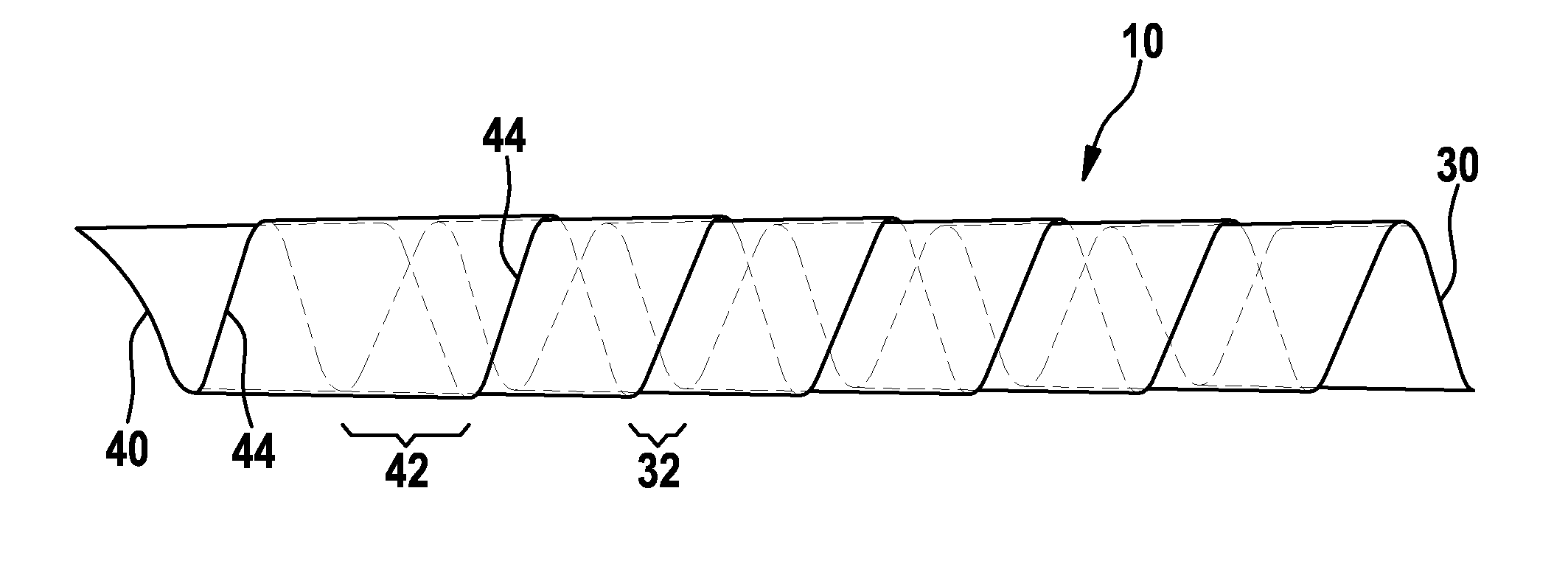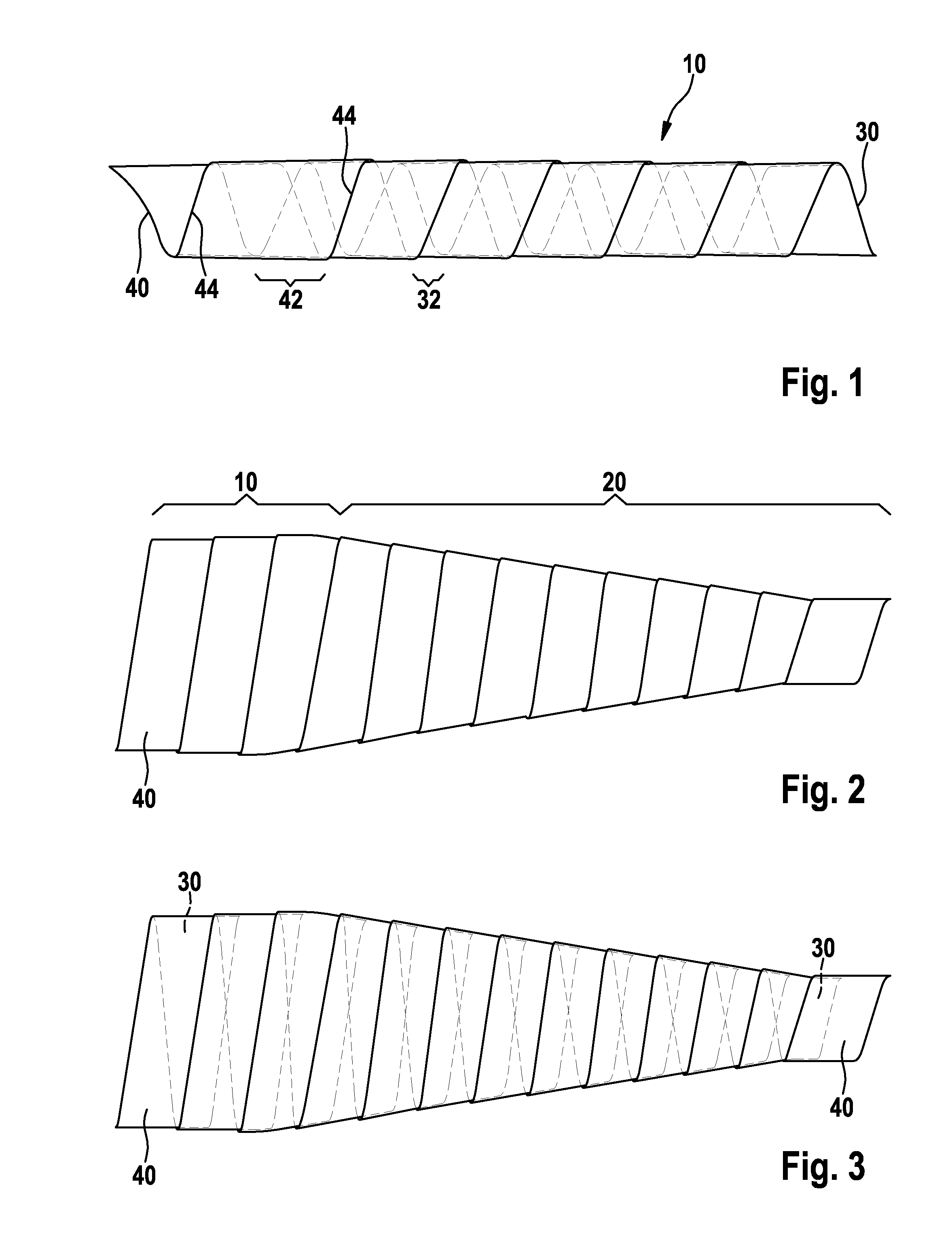Catheter Shaft
a catheter shaft and shaft technology, applied in the direction of catheters, etc., can solve the problems of high cost, high cost, and high cost, and achieve the effects of low roughness value, good welding ability, and good gliding properties
- Summary
- Abstract
- Description
- Claims
- Application Information
AI Technical Summary
Benefits of technology
Problems solved by technology
Method used
Image
Examples
Embodiment Construction
[0063]The longitudinal section of the catheter shaft illustrated in FIG. 1 is a hollow cylindrical area 10 having uncut ends. This means that the ends of the longitudinal section illustrated in FIG. 1 should be cut for an easier connection of a balloon or a grip by means of welding or gluing. The longitudinal section illustrated in FIG. 1 is wound from two film strips 30 and 40, wherein the second film strip 40 is wound over the windings of the first film strip 30. It can be seen that both film strips 30 and 40 have opposite inclines. This means that the first film strip 30 has a clockwise incline, and the second film strip 40 has a counter-clockwise incline. This results in the two film strips 30 and 40 overlapping each other in a crosswise manner. Such crosswise overlapping has the advantage of a uniform distribution of the overlapping regions across the lateral surface of the longitudinal section, or of the catheter shaft. Therefore, uniform torsion stiffness is ensured upon init...
PUM
| Property | Measurement | Unit |
|---|---|---|
| thickness | aaaaa | aaaaa |
| thicknesses | aaaaa | aaaaa |
| thickness | aaaaa | aaaaa |
Abstract
Description
Claims
Application Information
 Login to View More
Login to View More - R&D
- Intellectual Property
- Life Sciences
- Materials
- Tech Scout
- Unparalleled Data Quality
- Higher Quality Content
- 60% Fewer Hallucinations
Browse by: Latest US Patents, China's latest patents, Technical Efficacy Thesaurus, Application Domain, Technology Topic, Popular Technical Reports.
© 2025 PatSnap. All rights reserved.Legal|Privacy policy|Modern Slavery Act Transparency Statement|Sitemap|About US| Contact US: help@patsnap.com


